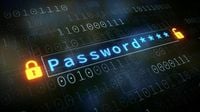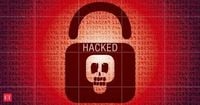In what cybersecurity experts are calling the largest data breach in history, a staggering 16 billion login credentials, including passwords, have been leaked, exposing users of major tech platforms such as Apple, Google, Facebook, and even government services. This unprecedented leak, confirmed on June 19, 2025, has sent shockwaves through the global digital security community and triggered urgent warnings from organizations like Google and the FBI.
The breach was uncovered through meticulous research by cybersecurity firm Cybernews, who worked with analyst Davey Winder of Forbes to analyze the scale and implications of the leak. Vilius Petkauskas, a Cybernews researcher, revealed that since the start of 2025, they have discovered 30 exposed datasets containing anywhere from tens of millions to over 3.5 billion records each, culminating in a total of 16 billion compromised credentials. Remarkably, almost all of these datasets are newly discovered, not recycled from past breaches, highlighting the fresh and highly structured nature of this data.
"This is not just a leak – it’s a blueprint for mass exploitation," Cybernews researchers warned. The exposed credentials are considered "ground zero for phishing attacks and account takeover," according to Winder. These credentials provide direct access to a vast array of online services, including social media, VPNs, developer portals, and government platforms. The data is typically organized as a URL followed by login details and passwords, a signature pattern of modern infostealer malware activity.
Infostealers are malicious programs that silently harvest user credentials from infected devices and upload them to databases controlled by cybercriminals. These databases then briefly appear on the dark web, where they can be bought for minimal sums, making stolen passwords accessible to a wide range of bad actors. The 16 billion credentials are not remnants of old breaches but fresh intelligence, weaponizable at scale, which greatly increases the potential for identity theft, account takeovers, and targeted phishing campaigns.
Experts emphasize that the leak’s scale and freshness make it a critical threat. The FBI has issued warnings advising people not to click on suspicious links in SMS messages, a common phishing vector that exploits leaked credentials. Meanwhile, Google has urged billions of its users to switch from traditional passwords to more secure passkeys, underscoring the urgent need for stronger authentication methods.
Cybernews journalist Petkauskas noted a disturbing trend: new datasets of stolen credentials are surfacing online every few weeks, fueled by the proliferation of infostealer malware and the persistent issue of misconfigured cloud environments. These misconfigurations can inadvertently expose sensitive data to anyone who stumbles upon them, whether security researchers or malicious actors.
Darren Guccione, CEO and co-founder of Keeper Security, a privileged access management platform, highlighted the alarming ease with which sensitive data can be unintentionally exposed online. He warned that many credentials might still be lurking in misconfigured cloud storage, waiting to be discovered. Guccione stressed the importance of investing in password management solutions and dark web monitoring tools, which alert users when their credentials appear in leaks, enabling prompt action.
Organizations are not exempt from responsibility. Guccione advocates for adopting zero-trust security models that enforce strict authentication, authorization, and logging for access to sensitive systems. This approach limits risk by ensuring that even internal access is continuously verified, reducing the chance of unauthorized data exposure.
Javvad Malik, lead security awareness advocate at KnowBe4, echoed these sentiments, emphasizing that cybersecurity is a shared responsibility. "Organizations need to do their part in protecting users," he said, "and people need to remain vigilant and mindful of any attempts to steal login credentials. Choose strong and unique passwords, and implement multi-factor authentication wherever possible." Malik’s advice aligns with broader expert recommendations to change passwords regularly, avoid reusing them across sites, and use password managers to generate and store complex credentials.
The breach’s implications extend beyond individual users. Cybercriminals can leverage these credentials for a range of attacks, including phishing campaigns tailored with real login data, ransomware intrusions facilitated by credential reuse, business email compromise schemes, and widespread identity theft. Even a low success rate in exploiting these credentials can lead to millions of compromised accounts, causing significant financial and personal harm globally.
While it remains unclear exactly how many unique individuals have been affected—due to overlapping data and the sheer volume of records—the impact is expected to be massive, considering the global internet user base exceeds 5.5 billion. Security researchers caution that this breach may only be the beginning, as infostealer malware becomes more widespread and cloud security challenges persist.
In light of this, experts urge immediate action. Individuals should promptly change their passwords, especially if they reuse them across multiple platforms, enable multi-factor authentication wherever available, and consider subscribing to dark web monitoring services. Organizations must bolster their defenses by auditing cloud infrastructure, adopting zero-trust frameworks, enforcing privileged access controls, and educating employees about phishing and credential hygiene.
The Cybernews team concluded with a chilling warning: "The next dataset may already be out there. It’s just a matter of who finds it first." This historic breach serves as a stark reminder that in today’s interconnected digital world, robust cybersecurity practices are not optional—they are essential for protecting personal and organizational data from exploitation.






